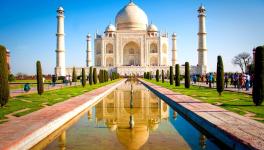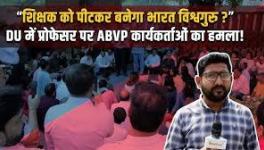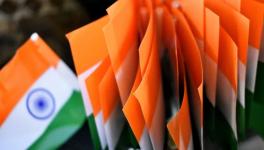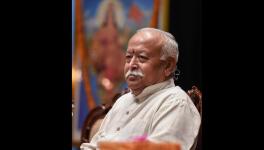Why we Recall Partition Horrors Amid Independence Day Celebrations
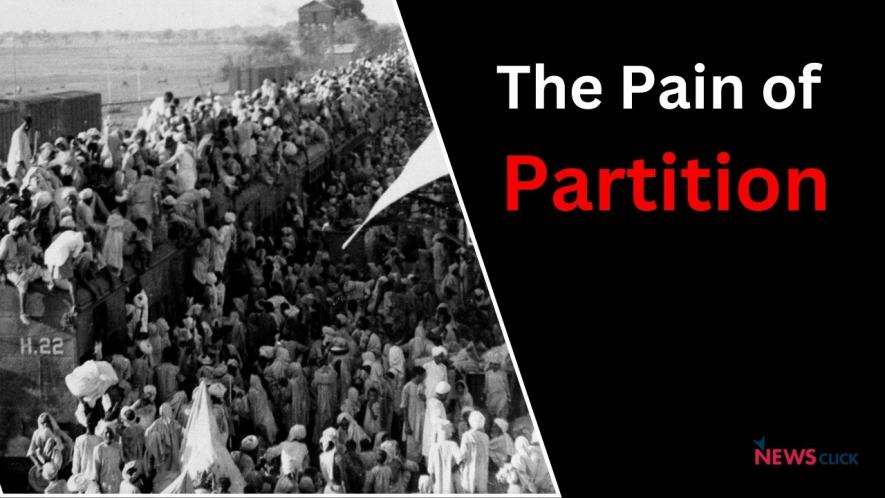
India celebrates Independence Day on 15 August 1947, while Pakistan celebrates its Independence Day a day earlier. It was a massive struggle by the people of India, which got us our freedom from the clutches of colonial rule. It’s a day to remind ourselves about the anti-colonial struggle, which, as Surendranath Banerjee wrote, transformed India into ’a nation in the making’.
Indeed, India became a nation during the colonial period, and 15 August reminds us of the great struggles Mahatma Gandhi launched in 1920, 1930 and 1942 to throw off the colonial yoke. The day also reminds us of revolutionaries like Bhagat Singh and Chandra Shekhar Azad, who bravely faced the gallows or took bullets for freedom. And most of all, it reminds us of how Hindus, Muslims, Sikhs and Indians of all sects and religions struggled together to throw the British colonialists out.
But the Narendra Modi government has also started observing the Partition Horrors Remembrance Day for the last three years. It is always accompanied by a propaganda blitz that Partition was due to Pakistan founder Mohammad Ali Jinnah’s demand for a separate country for Muslims. It portrays the Muslims as adamant about a separate nation and accuses Congress stalwart Jawaharlal Nehru as one filled with the lust to become prime minister who let Partition take its course.
Seventy-one years after Independence, the Indian government announced the observance of this day and prepared exhibitions showing the tragedy of Hindus being displaced and slaughtered during the migrations. A new narrative has been boosted—a communal narrative—but it has nothing to do with the truth and aims only to intensify hate.
The narrative is spread through well-oiled machinery, which includes ground-level work through social media and WhatsApp, using government-friendly media to spread communalism through TV news, and rumours that falsify history. The narrative is so intent on Jinnah and claiming that Hindus and Muslims are two separate nations that it creates a similar perception in the present—that the two social groups cannot live together. Lies play a role in spreading hate, but half-truths can be even more dangerous.
While Jinnah got the Pakistan Resolution passed in 1940, it was a culmination of two parallel and opposite phenomena—Muslim communalism, as represented by the Muslim League, and Hindu communalism, as embodied in the Hindu Mahasabha and the Rashtriya Swayamsevak Sangh. Both these strands of our history culminated in the Pakistan Resolution.
Both Hindu and Muslim communalists have run in parallel through their past. The coming together of associations such as the Poona Sarvajanik Sabha, the Madras Mahajan Sabha and the Bombay Association to form the Indian National Congress in 1885 represented the newer social classes of businessmen, industrialists, working classes and educated classes. The process of reaching education to the Dalits and women was also ongoing. In response, the old ruling sections of landlords and kings, both Muslim and Hindu, came together to form the United India Patriotic Association. It had stalwarts like Sir Syed Ahmad Khan of Aligarh and Raja Shivprasad Singh of Kashi, who proclaimed their loyalty to British rule. In due course, this formation’s Hindu and Muslim components separated as the Hindu Mahasabha and the Muslim League. Some educated elite caste figures joined them later.
While the Congress-led national movement talked about composite nationalism, the Muslim League harped on Muslim nationalism, and the Hindu Mahasabha and the RSS spoke of India as a Hindu nation. Regarding articulation, it was Savarkar, not Jinnah, who first stated the two-nation theory. In his book, Hindutva or Who is a Hindu, published in 1923, Savarkar said there are two nations here, Hindu and Muslim.
Golwalkar, regarded as the ‘Guru’ of the RSS, took it further in his own book, We or Our Nationhood Defined, in which he eulogised Hitler and said Muslims must be relegated to second-class citizens. They were, in his view, “The non-Hindu people in Hindustan… [who] must entertain no idea but the glorification of Hindu nation, i.e., they must not only give up their attitude of intolerance and ingratitude towards this land and its age-old traditions but must also cultivate the positive attitude of love and devotion instead; in a word, they must cease to be foreigners or may stay in this country wholly subordinated to the Hindu Nation claiming nothing, deserving no privileges far less any preferential treatment, not even citizen’s rights.”
Savarkar re-emphasised the two-nation theory in his words: “As it is, there are two antagonistic nations living side by side in India. Several infantile politicians commit the serious mistake in supposing that India is already welded into a harmonious nation… Let us bravely face unpleasant facts as they are. India cannot be assumed today to be a Unitarian and homogenous nation, but on the contrary, there are two nations in the main: the Hindus and the Moslems, in India.”
As far as blaming Nehru for harbouring lust for power and thereby hastening the Partition is concerned, the truth is elsewhere. It was Sardar Patel who first conceded the Mountbatten Plan for Partition. It was British colonialists who realised it was impossible to rule India in the aftermath of the powerful Quit India movement in 1942. As it decided on the independence of India, it wanted to preserve its political and economic interests. The British academic David Sanders notes that Clement Atlee’s government had ‘recognised that the Raj could not be preserved in the face of continued and growing nationalist-inspired civil disorder’.
The colonial powers knew the main leadership of India’s freedom movement was left of centre in ideology and more likely to ally with the Soviet bloc than the imperialist nations, so they wanted to ensure they had an ally—a subjugated state in South Asia—so the partitioning of the country was their goal.
Partition Horrors Remembrance Day selectively wants to project the killings of Hindus when the truth is that both the Hindus and Sikhs coming from West and East Pakistan and the Muslims migrating from India to Pakistan suffered tremendously. Throughout the whole process of the two-nation theory, communal violence was promoted equally by the communalist streams, Hindu and Muslim, in their politics.
Partition Horrors Remembrance Day and related activities aim to intensify propaganda against “Muslim separatism” in the guise that it was Jinnah who was for Partition and Pakistan. It also wants to intensify the ceaseless propaganda against Nehru. So, Independence Day is being presented in parallel to the horrors of Partition—not to truly learn from the mistakes of history but as yet another tool for communal forces to drive a wedge between communities and defame those who struggled for India’s freedom.
The author is a human rights activist. The views are personal.
Get the latest reports & analysis with people's perspective on Protests, movements & deep analytical videos, discussions of the current affairs in your Telegram app. Subscribe to NewsClick's Telegram channel & get Real-Time updates on stories, as they get published on our website.












